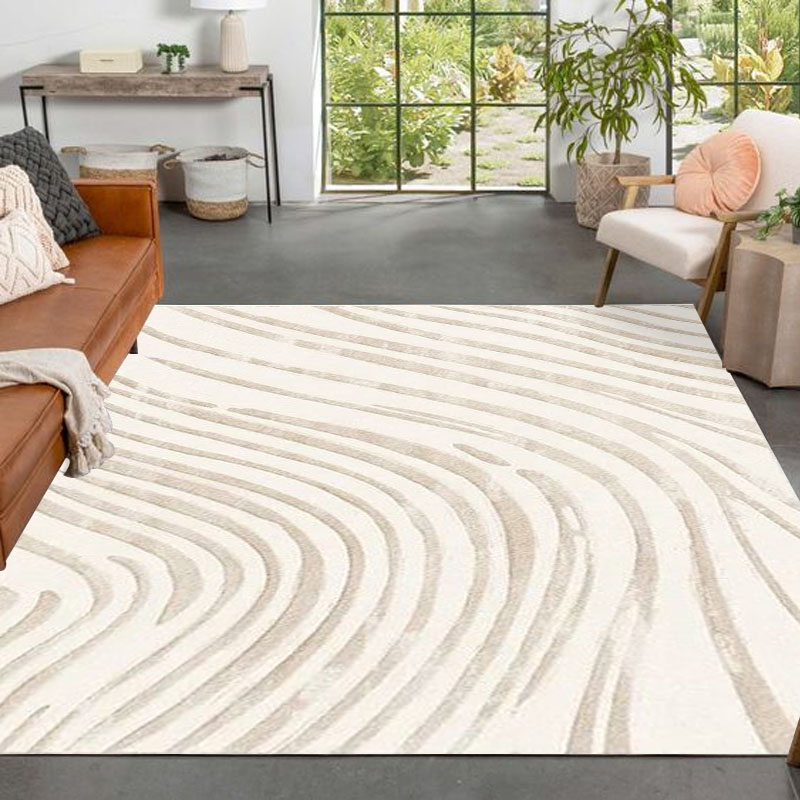When designing a living room, the flooring choice sets the tone for the entire space. A wool carpet for the living room is not merely a decorative element; it’s a strategic investment in comfort, durability, and timeless style. Beyond its luxurious feel, wool offers a range of practical benefits that make it a superior choice for a high-traffic area. This article will explore why selecting a wool carpet is a foundational decision for creating a beautiful, healthy, and long-lasting home environment.
Why Wool is the Smart Choice for Your Living Room
Choosing wool over synthetic alternatives is a decision that pays off in both immediate benefits and long-term value.
- Unmatched Durability and Resilience: Wool fibers have a natural crimp that gives them exceptional resilience. They can withstand heavy foot traffic, bounce back from furniture indentations, and maintain their appearance for years, making them ideal for a busy family living room.
- Natural Stain and Soil Resistance: The outer layer of a wool fiber contains a waxy, protective coating that naturally repels spills and dirt. This makes cleaning and maintaining a wool carpet surprisingly easy, helping it to look new for longer.
- Superior Comfort and Insulation: Wool is a natural insulator, providing a soft, warm feel underfoot. It helps to retain heat in the winter and can even help cool a room in the summer, contributing to energy efficiency and a comfortable living space year-round.
- Hypoallergenic and Air-Purifying Properties: Wool fibers naturally trap airborne particles like dust and pollen, acting as a natural air filter. This can help improve the indoor air quality, making it a great option for allergy sufferers.
Key Considerations When Buying a Wool Carpet
To ensure you get the best performance and value from your wool carpet for the living room, consider these key factors.
- Pile Type:
- Cut Pile: Provides a soft, plush feel and a luxurious look. Ideal for a cozy, formal living room.
- Loop Pile: Known for its durability and resilience. This is a great choice for high-traffic living rooms or homes with children and pets.
- Cut & Loop: Combines both textures to create unique patterns and add visual interest while maintaining durability.
- Density and Weight:
- A denser, heavier pile indicates a higher-quality carpet. You can check density by pressing your fingers into the pile; the less you can feel the backing, the denser the carpet.
- Wool Blend vs. 100% Wool:
- While 100% wool offers the purest benefits, blends with synthetic fibers can sometimes enhance durability and reduce cost. Look for blends with a high wool content (e.g., 80/20 wool/synthetic blend) to retain wool’s key properties.
- Color and Style:
- Choose a color and style that complements your existing decor. Lighter colors can make a room feel more spacious, while darker shades can add warmth and hide stains more easily.
Summary
A wool carpet for the living room is a wise and sustainable choice that delivers exceptional value. Its natural durability, stain resistance, and insulating properties make it a practical option for a high-traffic area, while its soft texture and timeless elegance transform a living space into a haven of comfort. By focusing on pile type, density, and material quality, you can make a smart investment that enhances your home’s beauty and well-being for decades.
FAQ
Q1: Is a wool carpet hard to clean? A: No, wool’s natural protective layer repels dirt and spills, making it surprisingly easy to clean. Regular vacuuming and immediate spot cleaning of spills are usually all that is needed to maintain its beauty.
Q2: Is wool carpet a good choice for people with allergies? A: Yes. Wool fibers can naturally trap airborne particles like dust, pollen, and pet dander, acting as a filter and helping to improve indoor air quality, which can be beneficial for allergy sufferers.
Q3: Does a wool carpet fade over time? A: Wool has excellent dye-retention properties. When exposed to sunlight, it will fade much more slowly than most synthetic carpets, allowing it to maintain its vibrant color for a long time.
Q4: Is wool carpet more expensive than synthetic carpet? A: Initially, wool carpet can be more expensive than synthetic options. However, due to its exceptional durability and longevity, it often proves to be a more cost-effective investment over the long term as it doesn’t need to be replaced as frequently.
Post time: Aug-19-2025












